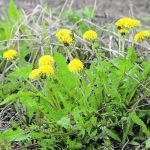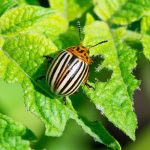Renaissance BioScience’s chief strategy officer, John Husnik, said the basis of the biopesticide is to target the potato beetle by creating an RNA-based, baker’s-yeast-hosted delivery system, which will affect insects on a cellular level and ultimately kill them.
Tag Archives biopesticide

Scientist says interest wanes in bio-pesticides
A variety of roadblocks can impede commercialization of biological crop protection products, making them too expensive
Bio-pesticides aren’t ready to compete with synthetic pesticides in broad scale agriculture, said a retired Agriculture Canada scientist. Research into bio-pesticides has waned in the last decade, partly because it takes so long to get products to market in Canada. “I don’t see an appetite for these products in North America yet. In fact, I […] Read more
When the tech pipeline plugs
The first paragraph of a Western Producer article from Feb. 8, 2007, was a good one: “Researchers are jumping for joy over a promising new grasshopper bio-pesticide.” The story went on to say that Dan Johnson, an environmental science professor at the University of Lethbridge, had discovered a soil fungus that controls grasshoppers. At the […] Read more

Registration sought for mustard-based biopesticide
Allyl isothiocyanate has been used as pesticide for years, but company says new product more applicable to broad-acre crops
A Saskatchewan-based company uses the same burning sensation you get from a healthy heaping of wasabi or horseradish to fight crop diseases including clubroot and aphanomyces. All brassica species, including broccoli, cauliflower, cabbage, kale, and mustard produce a chemical called allyl isothiocyanate that causes the burning sensation. The toxicity of allyl isothiocyanate is low, and […] Read more



